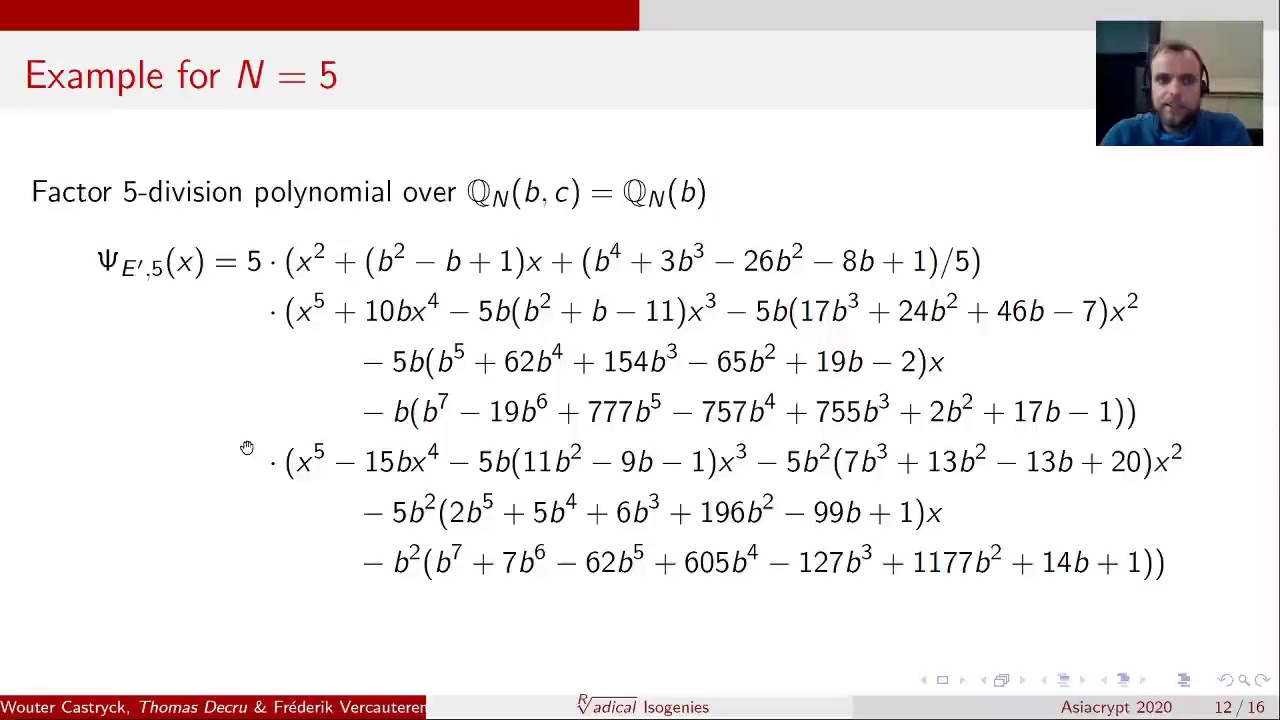Welcome to the resource topic for 2020/1108
Title:
Radical isogenies
Authors: Wouter Castryck, Thomas Decru, Frederik Vercauteren
Abstract:This paper introduces a new approach to computing isogenies called “radical isogenies” and a corresponding method to compute chains of N-isogenies that is very efficient for small N. The method is fully deterministic and completely avoids generating N-torsion points. It is based on explicit formulae for the coordinates of an N-torsion point P' on the codomain of a cyclic N-isogeny \varphi : E \to E', such that composing \varphi with E' \to E' / \langle P' \rangle yields a cyclic N^2-isogeny. These formulae are simple algebraic expressions in the coefficients of E, the coordinates of a generator P of \ker \varphi, and an $N$th root \sqrt[N]{\rho}, where the radicand \rho itself is given by an easily computable algebraic expression in the coefficients of E and the coordinates of P. The formulae can be iterated and are particularly useful when computing chains of N-isogenies over a finite field \mathbb{F}_q with \gcd(q-1, N) = 1, where taking an $N$th root is a simple exponentiation. Compared to the state-of-the-art, our method results in an order of magnitude speed-up for N \leq 13; for larger N, the advantage disappears due to the increasing complexity of the formulae. When applied to CSIDH, we obtain a speed-up of about 19 \% over the implementation by Bernstein, De Feo, Leroux and Smith for the CSURF-512 parameters.
ePrint: https://eprint.iacr.org/2020/1108
Talk: https://www.youtube.com/watch?v=lSccKqJrgEo
Slides: https://iacr.org/submit/files/slides/2020/asiacrypt/ac2020/308/slides.pdf
See all topics related to this paper.
Feel free to post resources that are related to this paper below.
Example resources include: implementations, explanation materials, talks, slides, links to previous discussions on other websites.
For more information, see the rules for Resource Topics .
